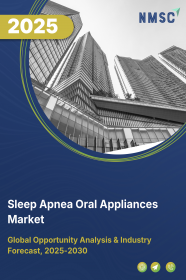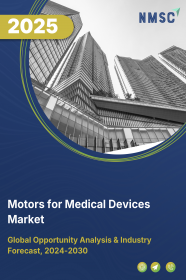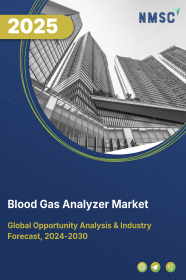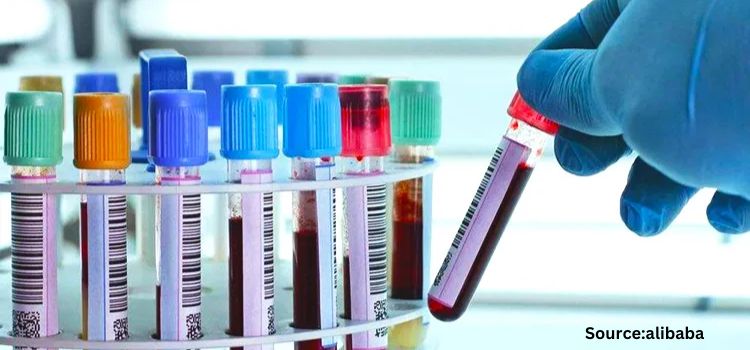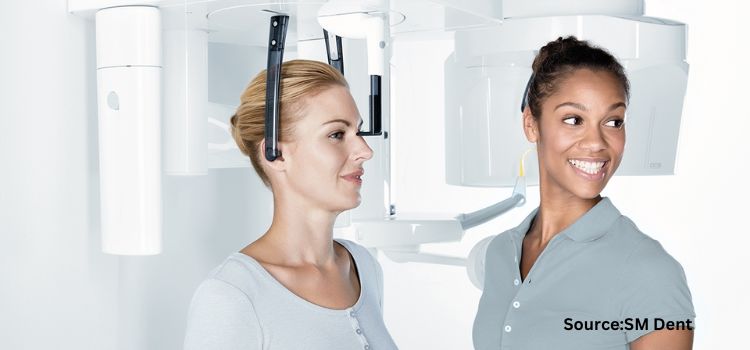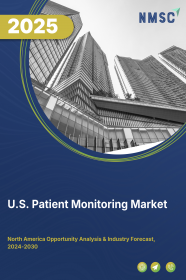
U.S. Patient Monitoring Market by Product (Cardiac Monitoring Devices, Blood Glucose Monitoring Systems, Hemodynamic/Pressure Monitoring Devices, Multi-parameter Monitoring Devices, Respiratory Monitoring Devices, Temperature Monitoring Devices, Fetal & Neonatal Monitoring Devices, Neuromonitoring Devices, Weight Monitoring Devices, and Other Devices), by Type (Conventional and Wireless), and Others- Opportunity Analysis and Industry Forecast, 2024–2030
Industry: Healthcare | Publish Date: 14-Feb-2025 | No of Pages: 148 | No. of Tables: 110 | No. of Figures: 75 | Format: PDF | Report Code : HC1086
Market Definition
The U.S. Patient Monitoring Market size was valued at USD 14.20 billion in 2023, and is predicted to reach USD 23.70 billion by 2030, with a CAGR of 7.3% from 2024 to 2030. Patient monitoring is a critical component of modern medicine, involving the ongoing or regular evaluation of a patient's vital signs, physiological parameters, and general health status throughout their medical care. This process utilizes a variety of medical devices and technologies to gather, record, and analyze data such as blood pressure, heart rate, oxygen saturation, respiratory rate, temperature, and other vital signs.
The patient monitoring market encompasses the healthcare industry segment dedicated to designing, manufacturing, and providing equipment and systems for continuously or intermittently monitoring and recording a patient's vital signs and health parameters. This segment plays a vital role in a variety of healthcare settings, from hospitals and intensive care units to outpatient clinics and home healthcare. This ensures that patients receive the appropriate level of care tailored to their specific medical requirements.
Rising Chronic Disease Fuels Patient Monitoring Demand in the U.S.
The U.S. region is grappling with a surge in chronic diseases, including cardiovascular disorders, diabetes, and respiratory ailments. This escalating health challenge has spurred a heightened demand for patient monitoring solutions. As chronic conditions necessitate continuous supervision, patient monitoring devices have become indispensable tools for healthcare providers. Ranging from wearable sensors to advanced diagnostic equipment, these technologies facilitate real-time tracking of vital signs, early detection of warning signs, and prompt intervention.
Government Initiatives Drives the Growth of Patient Monitoring Devices
The U.S. government plays a crucial role in driving the growth of the patient monitoring market by investing in healthcare infrastructure and promoting the adoption of advanced technologies. Government initiatives often involve providing incentives and creating a favorable regulatory environment to encourage collaboration between the public and private sectors. These efforts aim to improve access to healthcare services, particularly in underserved areas, by deploying mobile health units and telehealth services.
In addition, the government establishes clear regulatory frameworks and conducts public health campaigns to ensure the safe and effective use of patient monitoring technologies while educating the public about the benefits of regular health monitoring.
Connectivity Issues in Patient Monitoring Devices Restrains the Market Growth
One of the significant restraining factors in the patient monitoring market in the U.S. is the connectivity issues which pose a risk to real-time data transmission and communication between devices, impacting the timeliness and accuracy of patient information. Addressing these challenges is crucial for unlocking the full potential of patient monitoring technologies and ensuring their widespread adoption in the healthcare sector.
AI and Machine Learning in Patient Monitoring Systems Creates Ample Growth Opportunities
The emergence of Artificial Intelligence (AI) and Machine Learning (ML) in the U.S. is transforming patient monitoring by enabling the comprehensive analysis of massive datasets. AI algorithms are adept at identifying subtle patterns and anomalies in vital signs and medical history from patient records. This exceptional capability allows for the early detection of potential health issues even before symptoms manifest, paving the way for timely interventions.
Moreover, the integration of AI and ML fosters personalized medicine, enabling treatment plans to be customized to each patient's unique traits and responses. These technologies facilitate risk stratification, assisting healthcare providers in identifying patients at a higher risk of developing specific medical conditions or complications, thereby enabling them to effectively prioritize interventions.
Competitive Landscape
Various market players operating in the U.S. patient monitoring market include Medtronic Plc, Koninklijke Philips N.V., GE Healthcare, Siemens Healthineers, Nihon Kohden Corporation, Abbott Laboratories, Masimo Corporation, Hill-Rom Holdings, Inc., Biotronik SE & Co. KG, Honeywell International, Inc., and others.
U.S. Patient Monitoring Key Market Segments
By Product
-
Cardiac Monitoring Devices
-
Mobile Cardiac Telemetry Monitors
-
Electrocardiogram (ECG) Devices
-
Implantable Loop Recorders
-
Event Monitors
-
Smart/Wearable ECG Monitors
-
-
Blood Glucose Monitoring Systems
-
Self-Monitoring Blood Glucose Systems
-
Continuous Glucose Monitoring Systems
-
-
Hemodynamic/Pressure Monitoring Devices
-
Hemodynamic Monitors
-
Blood Pressure Monitors
-
Disposables
-
-
Multi-Parameter Monitoring Devices
-
Low-Acuity Monitoring Device
-
Mid-Acuity Monitoring Devices
-
High-Acuity Monitoring Devices
-
-
Respiratory Monitoring Devices
-
Pulse Oximeters
-
Spirometers
-
Capnographs
-
Peak Flow Meters
-
-
Temperature Monitoring Device
-
Handheld Temperature Monitoring Devices
-
Table-Top Temperature Monitoring Devices
-
Wearable Continuous Monitoring Devices
-
Invasive Temperature Monitoring Devices
-
Smart Temperature Monitoring Devices
-
-
Fetal & Neonatal Monitoring Devices
-
Neonatal Monitoring Devices
-
Fetal Monitoring Devices
-
-
Neuromonitoring Devices
-
Electroencephalograph (EEG) Machines
-
Electromyography Machines
-
Cerebral Oximeter
-
Intracranial Pressure (ICP) Monitors
-
Magnetoencephalography (MEG) Machines
-
Transcranial Doppler (TCD) Machines
-
-
Weight Monitoring Devices
-
Digital
-
Analog
-
-
Others Devices
By Type
-
Conventional
-
Wireless
By End User
-
Home Healthcare
-
Hospitals & Clinics
-
Others
REPORT SCOPE AND SEGMENTATION:
|
Parameters |
Details |
|
Market Size in 2023 |
USD 14.20 Billion |
|
Revenue Forecast in 2030 |
USD 23.70 Billion |
|
Revenue Growth Rate |
CAGR of 7.3% from 2024 to 2030 |
|
Analysis Period |
2023–2030 |
|
Base Year Considered |
2023 |
|
Forecast Period |
2024–2030 |
|
Market Size Estimation |
Billion (USD) |
|
Growth Factors |
Rising Chronic Disease Fuels Patient Monitoring Demand in the U.S. Government Initiatives Drives the Growth of Patient Monitoring Devices |
|
Companies Profiled |
10 |
|
Market Share |
Available for 10 companies |
|
Customization Scope |
Free customization (equivalent up to 80 working hours of analysts) after purchase. Addition or alteration to country, regional, and segment scope. |
|
Pricing and Purchase Options |
Avail customized purchase options to meet your exact research needs. |
KEY PLAYERS
-
Medtronic Plc
-
Koninklijke Philips N.V.
-
GE Healthcare
-
Siemens Healthineers
-
Nihon Kohden Corporation
-
Abbott Laboratories
-
Masimo Corporation
-
Hill-Rom Holdings, Inc.
-
Biotronik SE & Co. KG
-
Honeywell International, Inc.

















 Speak to Our Analyst
Speak to Our Analyst



